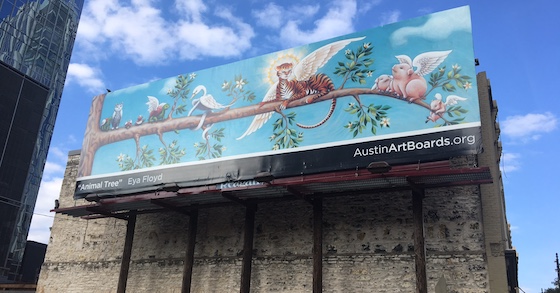Memo From Frank
2018 is now upon us, and it’s time to write down your New Year’s Resolutions. What’s important to you this year? For many people, the answer is a desire to build an additional income stream in the form of billboards. There are few options as attractive as building and buying billboards to build a significant additional form of money coming in the door. If that’s what you care about in 2018, then it’s time to start putting together your action plan. And you’ve come to the right place to harvest those ideas. In 1982, I made my own New Year’s Resolutions to build a billboard company from scratch. From my coffee table, I built the largest privately-owned billboard company in Dallas/Ft. Worth. Have you started on those Resolutions yet?
What Are Your New Year’s Resolutions – And How Can Billboards Fit Into That?

There are a lot of possible New Year’s Resolutions out there – such as losing weight or spending more time with your family. But it one of your Resolutions involves making more money or even finding a replacement option for your day job, then billboards might be your best option. So how do you get into the billboard business?
Step 1: Draw a circle 5 hours from your house
This area will become your “territory” and it represents the total area that you can comfortably drive out to and back in one day. In some parts of America, this circle will encompass several major cities, and in others it will only include some medium-sized towns. Unless you move over time, this area will never change, and it’s up to you to become the master of it. In some cases, it will even expand across more than one state.
Step 2: Contact the State Highway Dept. and learn the billboard laws in those states
For each state that your “territory” encircles, you’ll want to get a copy of that state’s billboard laws. Remember that billboards are a federally regulated industry, and each state has its own laws on billboard placement. These rules are not very difficult to grasp rapidly – they include spacing, size and height regulations.
Step 3: Get your license in those states that legally allow new billboards
To start obtaining permits for billboards, you’ll need to get a billboard company license in the state you are interested in. In most states, these licenses only entail filling out a form and sending in a small check. But you will be unable to obtain a permit until you have your license number.
Step 4: Take that “circle” and choose the strongest quadrant
Draw a vertical and horizontal line through that circle and this creates four quadrants. Based on your knowledge of your area, you should be able to select the “hottest” of these four sectors, based on the size of the cities, the prices of the homes, the traffic on the roads – the various signs of economic activity. This is the quadrant you want to begin with.
Step 5: Identify the major and secondary highways in that quadrant
Billboards are all about being seen from the road – so a major road is mandatory. Note the highways and major roads in this quadrant, because that’s what you’re going to focus on. You might want to highlight them on our map.
Step 6: Get the sign ordinance regulations of those cities that the highways cross through
Every potential billboard location in the U.S. falls into under one of two laws: 1) the state’s billboard ordinance or 2) the individual city’s billboard ordinance. You will note that those highways flow through many different cities. You will need to get the sign ordinances to each of those cities (typically these can be found on-line).
Step 7: Identify the legal city markets
You need to take these ordinances and put them in two stacks: 1) those that allow new billboard construction and 2) those that do not. The cities that don’t allow new billboards should be tabled for now (although you can still come back to them and try to obtain variances to their ordinance). For now, you want to focus on the legal cities.
Step 8: Get those cities’ zoning maps
For the cities that do allow new billboards, you want to obtain the zoning maps for those areas of the city that have frontage on the highways or major roads. These can be purchased over the phone, or obtained on-line.
Step 9: Make a short summary of the zonings and spacings in the state and local markets
Make a one-page summary of each city’s billboard law, and staple that to the zoning maps with the legal billboard zonings highlighted in yellow. That’s all you need to get started – and that puts you on the same level as the most sophisticated pro.
Step 10: Get in your car and start your search
Armed with these “cheat sheets” you can now get in your car and start finding legal billboard locations immediately. Those areas that do not fall in the city limits will be governed by the state billboard requirements.
Conclusion
That’s how professionals prepare to find billboard locations. Once you have the hang of it, you can produce tremendous results very quickly. And since it all makes complete mathematical sense, there’s no wasted effort. If your Resolution is to make money in billboards, that’s how it works – at least as far as finding billboard locations is concerned.
The Ultimate Billboard Boot Camp
![]() How to Find a Billboard Location
How to Find a Billboard Location
![]() How to Buy a Billboard
How to Buy a Billboard
![]() How to Build a Billboard
How to Build a Billboard
![]() How to Operate a Billboard
How to Operate a Billboard
![]() How to Rent Ad Space on a Billboard
How to Rent Ad Space on a Billboard
![]() How to Sell a Billboard
How to Sell a Billboard
Get Your Copy Now!
Making A Good Living On A Bundle Of Poles And Plywood

One of the safest ways to make significant money in the billboard business is to focus on the wooden sign industry – those telephone pole billboards you see along rural highways and even within major cities in some occasions. These signs are your #1 way to successfully get into the billboard business for a number of reasons.
The largest number of potential legal locations
Of the thousands of miles of highways in the U.S., by far the majority of these are rural, meaning that they are outside of an established city limit, or inside of a smaller or medium-sized market. These areas are ripe for new billboard construction, as they have not been scrutinized by larger billboard companies. This low level of competition is a huge asset.
The lowest required investment
Wooden billboards cost only $1,000 to $4,000 to build in most markets. That’s 90% less than steel signs. This low price makes getting into the billboard business possible for almost anyone who has the desire to do so. As you’ll see in a minute, there is absolutely nothing you can invest in that has as much potential for income at this low a level of capital cost.
The highest financial returns
Wooden signs have amazing potential. My best wooden sign cost around $4,000 and yielded $20,000 per year for. I also had wooden signs that cost $1,000 and made $4,000 per year. Those are returns greater than 100% -- that’s insanely great. Let’s put this into perspective. If you owned 10 wooden billboards that made $3,000 per year each, that’s an annual income of $30,000 per year. And to obtain that income, once the signs are built, all you have to do is rent each ad face one time per year. If you had 50% renewal of the advertisers, that means you only have to rent 10 advertisements per year – less than one per month. And that’s easy to do on weekends despite your day job.
The easiest to operate
Wooden signs have no moving parts. They typically don’t even have light fixtures on them. Additionally, they are low to the ground and less likely to sustain damage in high winds and storms. Their repair & maintenance is negligible, as is their insurance and property taxes. They are the most simple of all billboards to operate.
The power of volume
Because they are inexpensive, wooden signs are easier to build and own more of. And there’s huge power in volume. If the typical wooden sign makes $3,000 per year, then 30 signs makes nearly $100,000 per year. If you built just 10 wooden signs per year, then in three years you’d be able to have an enormous income potentially for the rest of your life.
Conclusion
Wooden signs are one of the best opportunities to create financial security in the United States. You should explore this amazing path to economic freedom.
Billboard Philanthropy: What Are The Options?

There’s more to life than just money, and some billboard owners prefer to occasionally forego regular rent to instead promote their own charitable cause. It’s also a great way to use unsold ad space in the short term, as there can even be financial advantages to doing good. So what are the options?
Public service advertisements
One of the most common moves are public service advertisements. These can range from “Mothers Against Drunk Driving” to the “Salvation Army”. To utilize this option, you contact the charity that you want to support and see if they can supply you with a pre-printed vinyl to install. And the plus of these type of advertisers is that they typically have very professional advertising designs and the necessary paperwork for you to make the tax deduction claim (discussed below).
Fine art possibilities
Some people prefer to think more “outside the box”. Some create their own charitable concept. A very interesting angle is to hold a contest for the best artwork, and then put that design (often drawn by a child) up on the sign using the wonder of vinyl technology. The sky is really the limit when it comes to donating ad space.
The financial aspect
Talk to your CPA, because it may be possible to deduct the value of the ad space that you donate as a charitable deduction. That will save you money on your taxes potentially. This means that you can do good and actually get some financial reward for doing so.
Some considerations before you begin
One big downside to using the advertisement for a good cause is that the landowner may not agree. Since many rents are based on a percentage of revenue, that means that your charitable effort is actually costing the landowner money. In addition, the very cause you support might be offensive to the landowner, who has the right in your lease to deny any advertiser that they find offensive. You might want to talk to the landowner before installing the advertisement, and get them on board.
Conclusion
Using billboards for charitable causes is very noble. It can be a great way to support non-profit interests that you find important. Make sure, however, that you understand the taxation opportunities and potential stress that it may cause to your relationship with the landowner.
